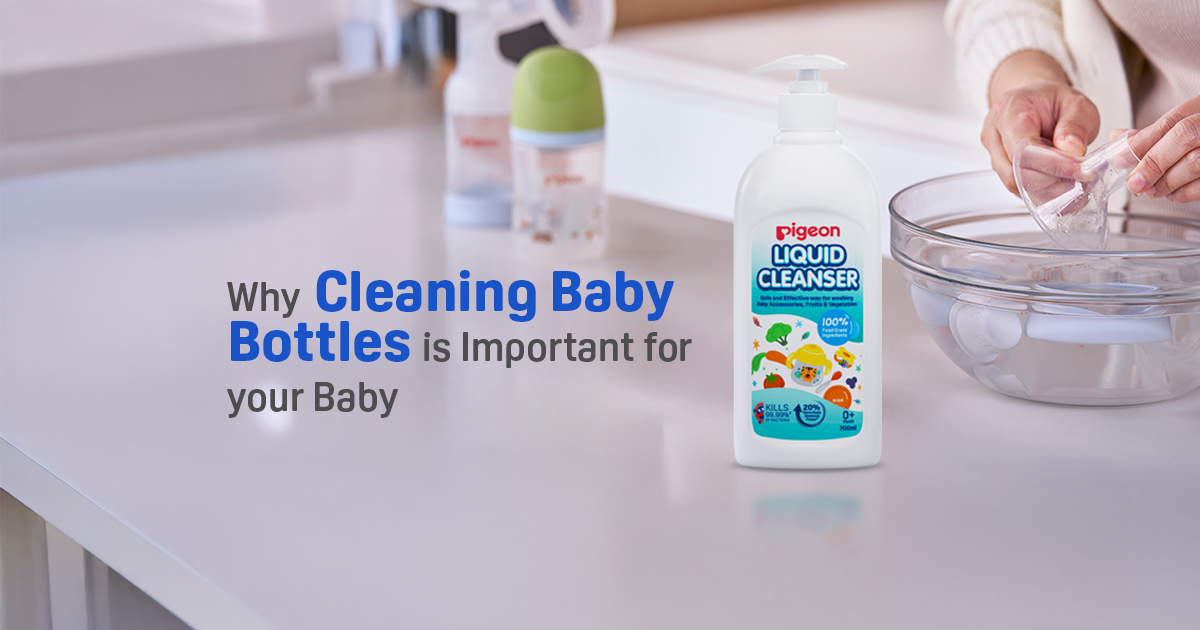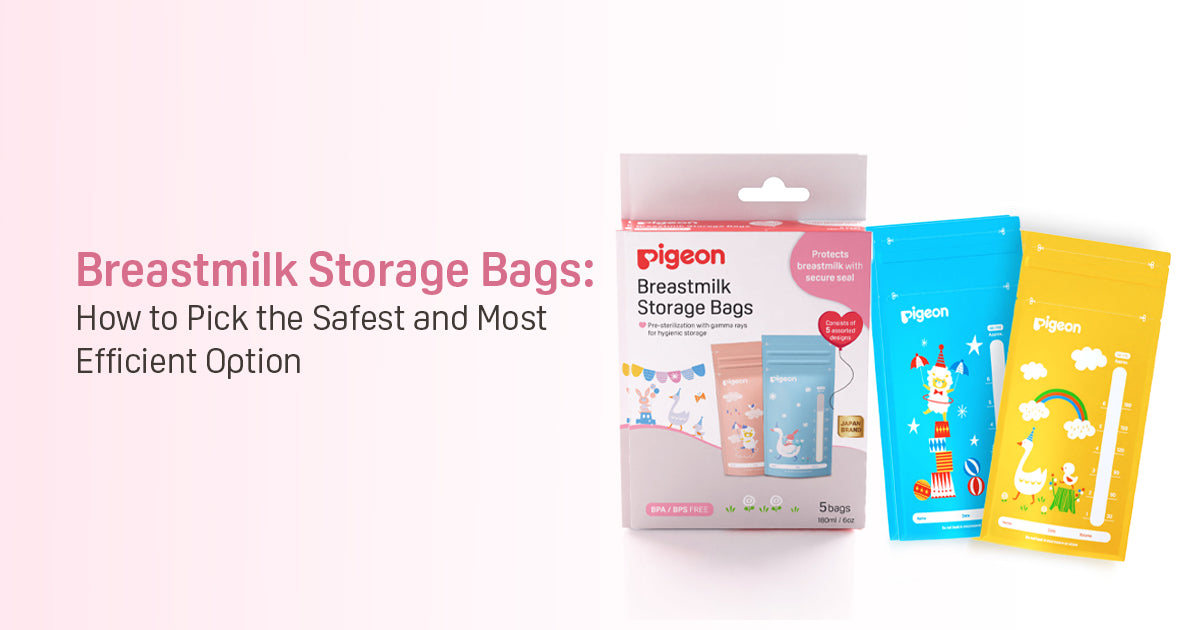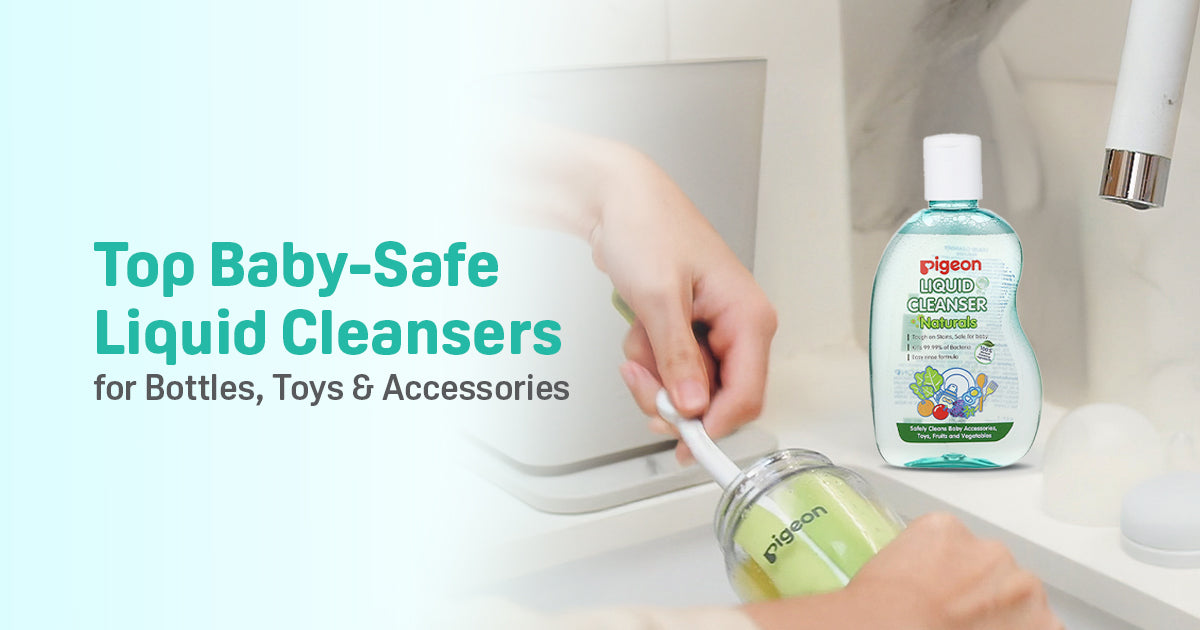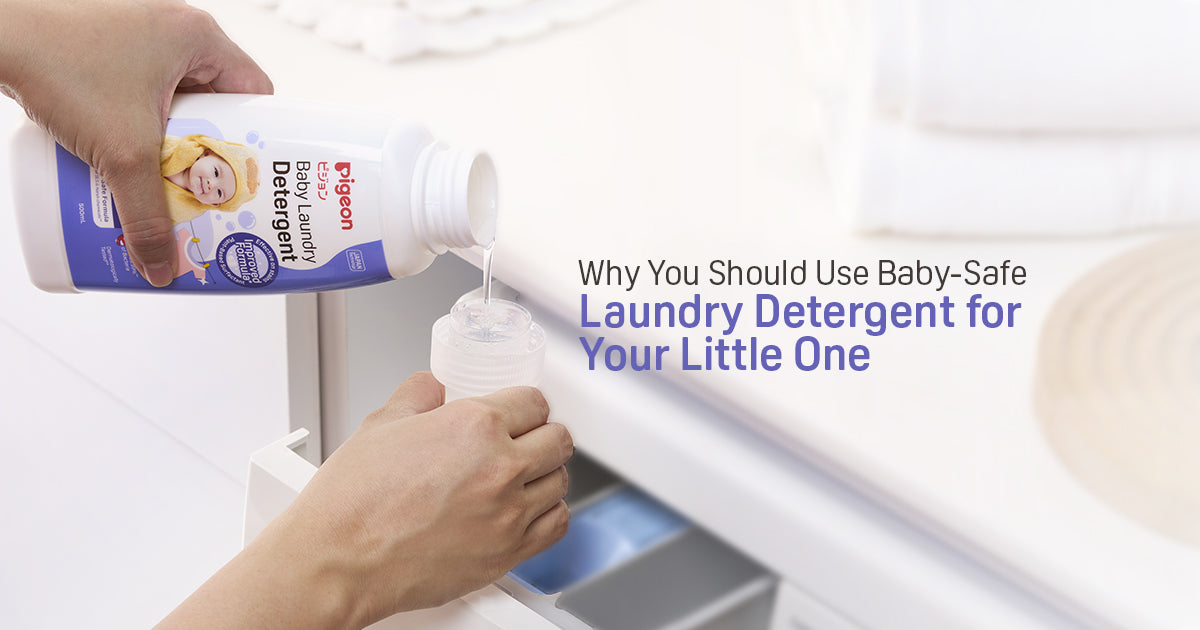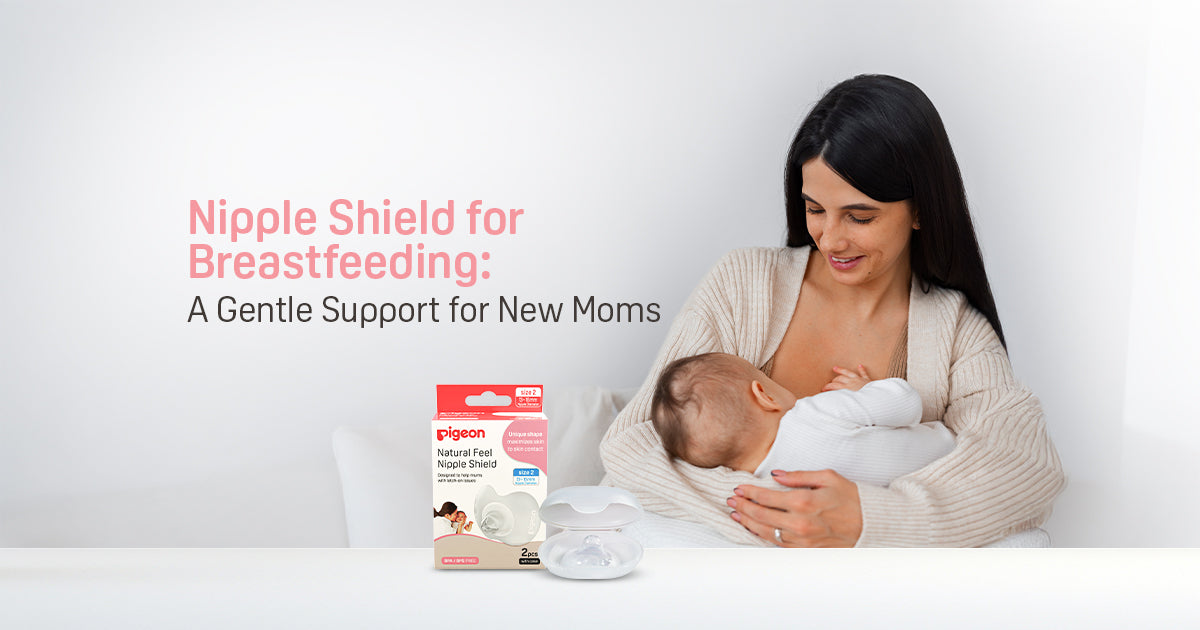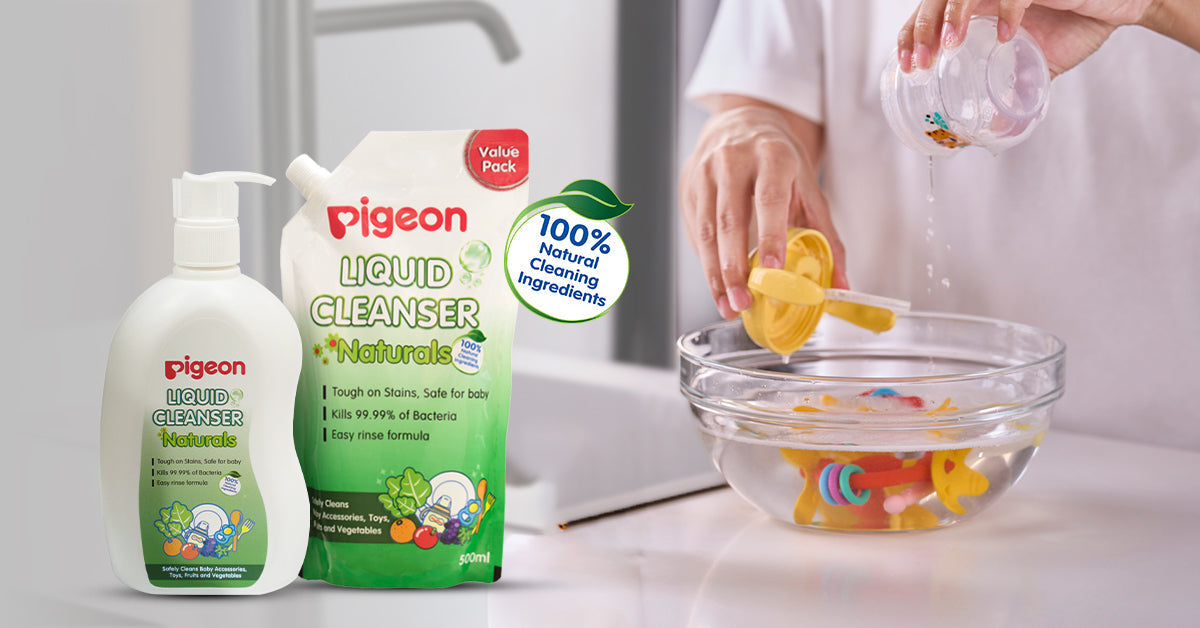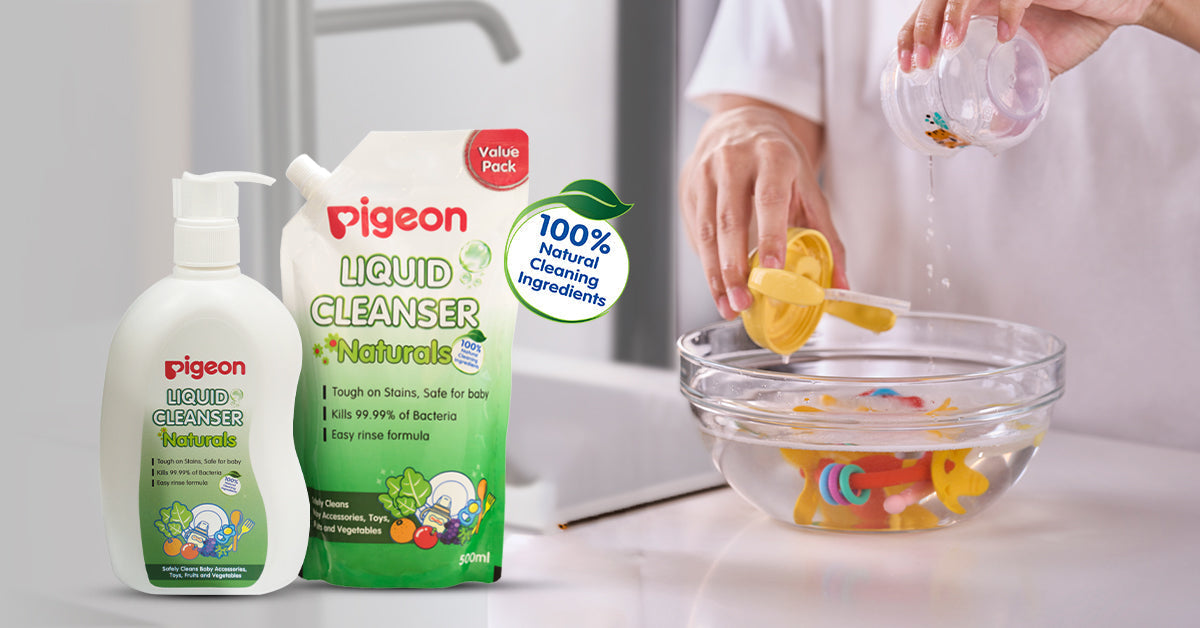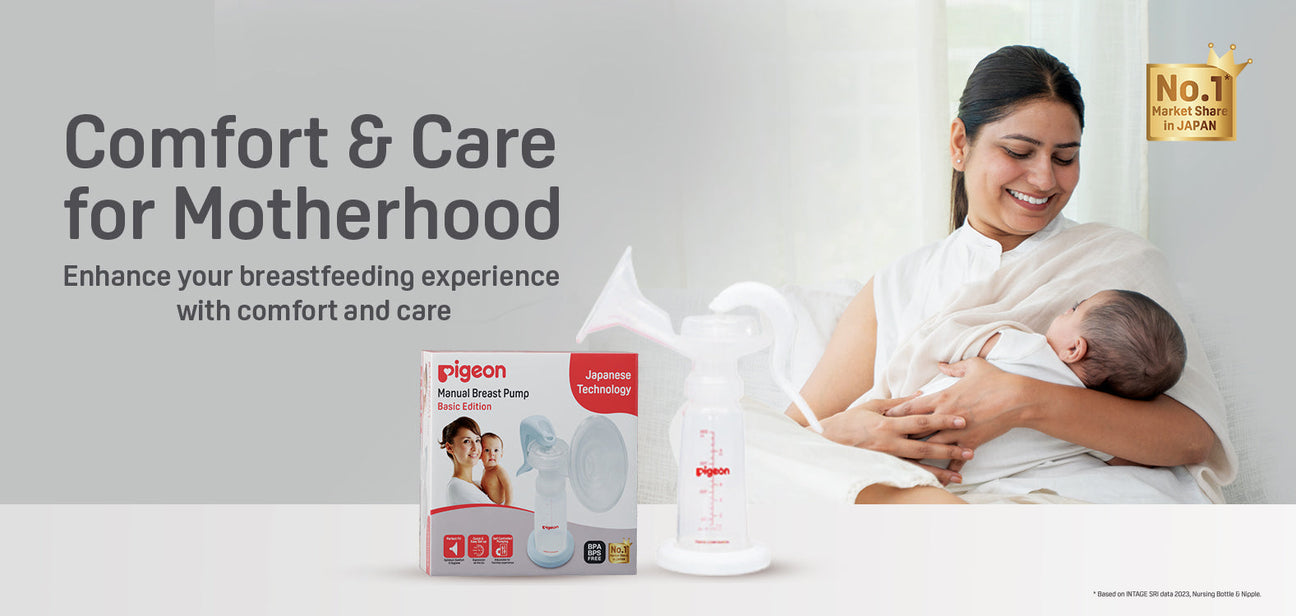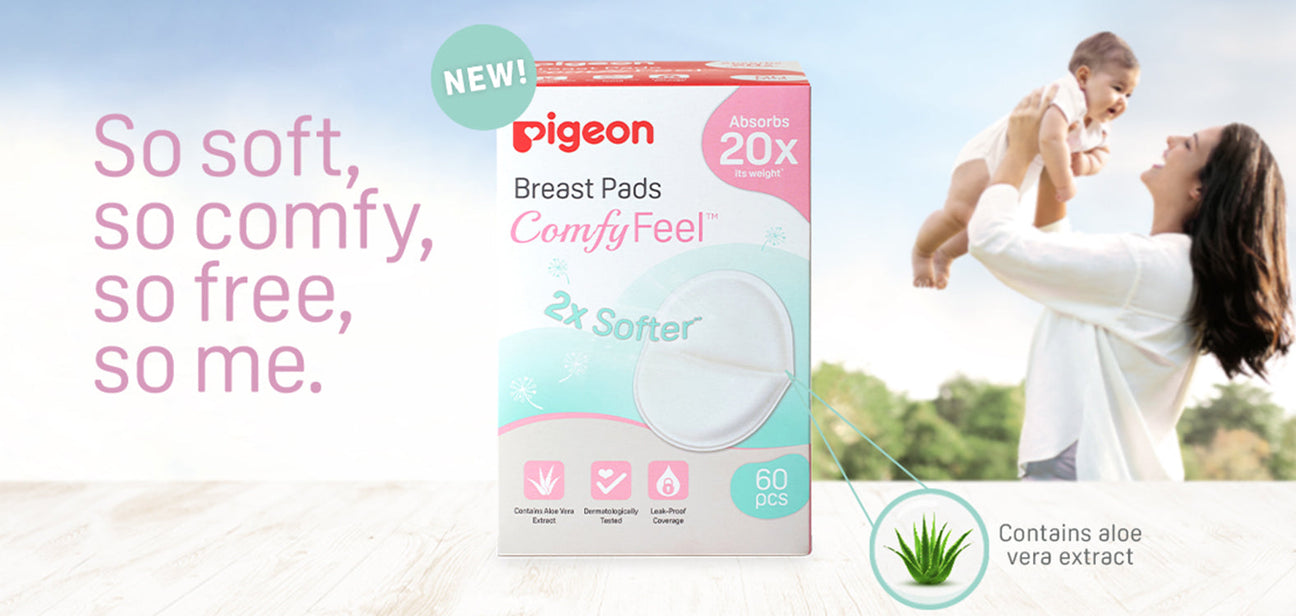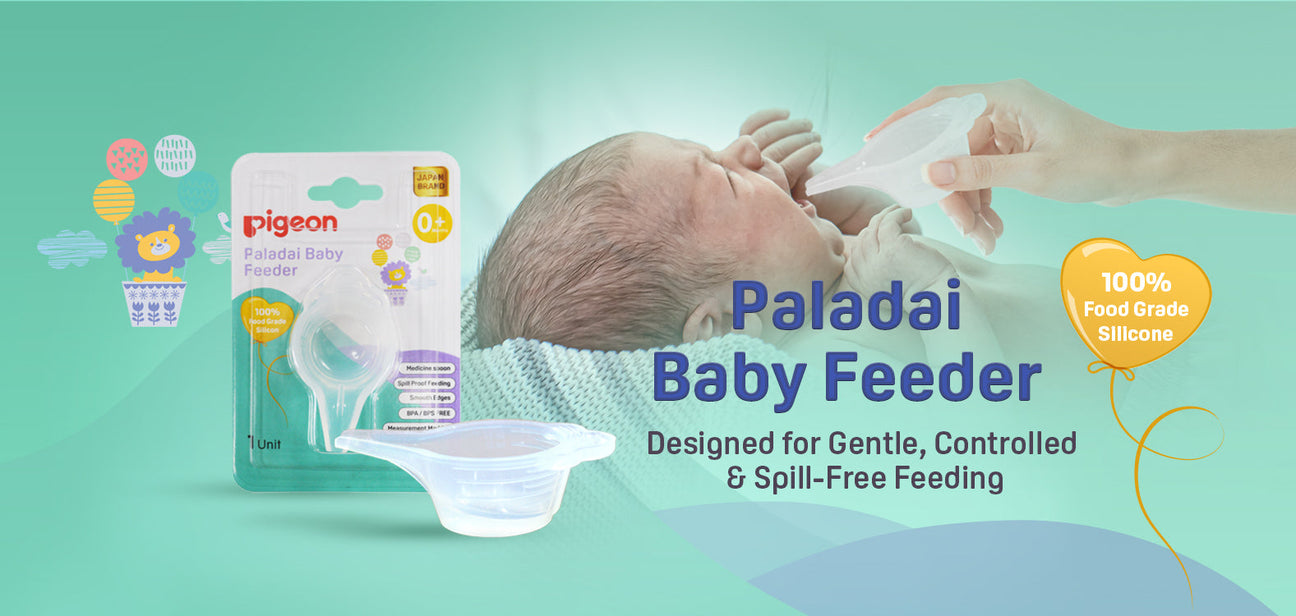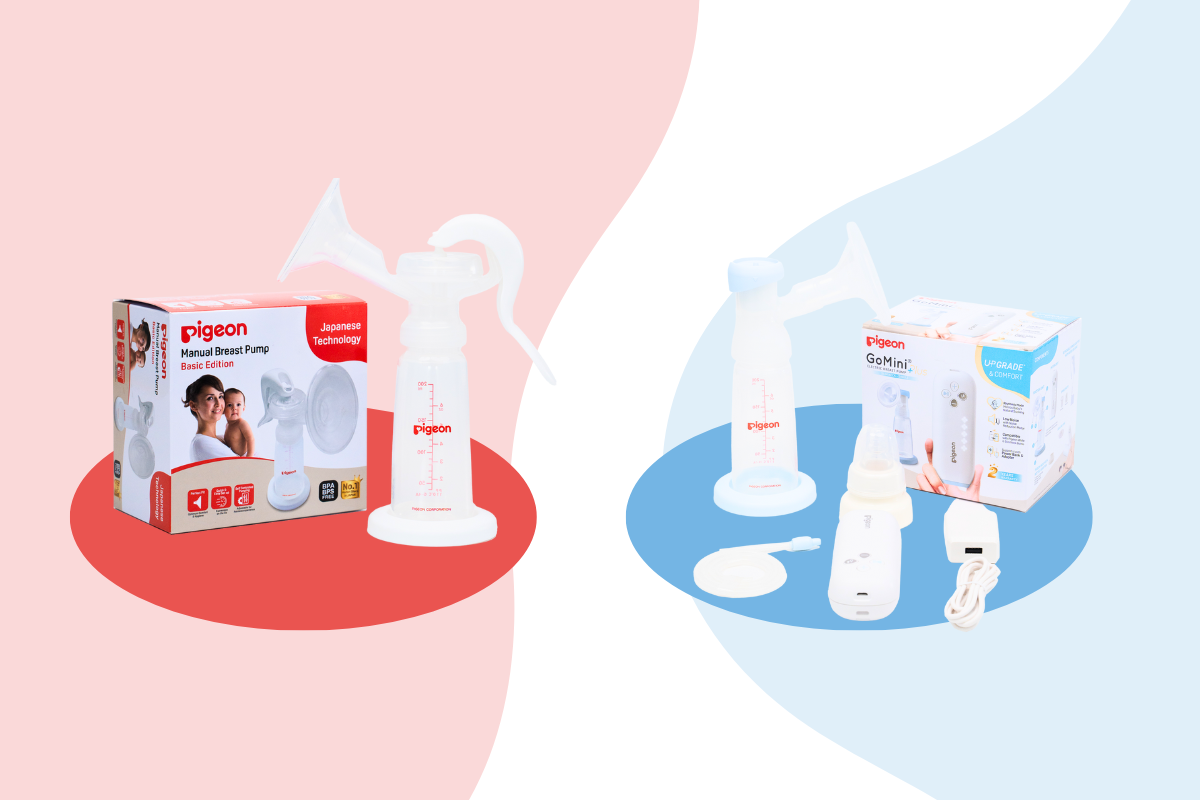Breastfeeding is a beautiful and natural process that nourishes a baby while creating a profound bond between mother and child. This is a process that initiates a deeper relationship with your baby after their birth.
Breastfeeding is crucial for newborns' initial development because it is the only source of nutrients for your baby. However, modern-day challenges like work, health conditions, or lifestyle choices can sometimes make direct breastfeeding a challenge.
This is where a breast pump can be a valuable tool for moms.
For all those moms, who are skeptical about using the breast pump for breastfeeding, we understand your worries. In this article, we have covered all your doubts from whether breast pumps are good or harmful, to understanding the benefits of breast pumps for both mom and baby, to tips on when and how to use them, and what to look for when purchasing one.
So, let’s dive in!
Is the Breast Pump Good or Harmful?
Whether it’s your first time being a mom or not, it is natural to be doubtful that breastfeeding through a breast pump is good or harmful for your baby. Here we have clearly stated the pros and potential cons of using a breast pump.
The Pros of Using a Breast Pump
-
Convenience and Flexibility:
In a world where women are taking career initiatives and achieving success, it can sometimes be difficult to give breastfeeding time to your baby. However nutritional quality should not be compromised in this process. Breast pumps allow moms to express milk and store it for later, giving them the freedom to return to work or engage in activities while ensuring the baby is fed properly.
-
Relieves Engorgement:
Breast engorgement is really common during the early days of breastfeeding. For mothers experiencing engorged breasts, it can be tough to breastfeed the baby directly, pumping can help alleviate discomfort by releasing excess milk and you can express the milk into the bottle and bottle feed the baby.
-
Supports Premature Babies:
Premature babies often struggle with breastfeeding due to underdeveloped reflexes or medical issues. Expressed breast milk provides vital nutrients, antibodies, and growth factors, boosting immunity, supporting development, and reducing infection risks. It also helps caregivers monitor intake, ensuring proper nourishment during their critical early days.
-
Helps Maintain Milk Supply:
Regular pumping is a vital tool for mothers who face challenges with breastfeeding, such as difficulty in latching or being separated from their baby. By mimicking the baby's natural nursing pattern, pumping stimulates the breasts to produce milk consistently, ensuring a steady supply.
Related blog:
When you feel that your breastmilk is insufficient
Potential Downsides
-
Improper Usage Risks:
Although using a breast pump is an easy and comfortable process pumping with incorrect suction levels can cause nipple soreness. To avoid this kind of issue, it is advised to read the manual correctly or to watch a tutorial video on how to express breast milk with a breast pump.
-
Dependency:
Breast pump is a great tool when you are a multi-tasking mom but over-reliance on a breast pump might reduce the baby’s chances to latch naturally. So, it is equally important to directly breastfeed sometimes.
-
Hygiene Concerns:
Proper cleaning of pump parts is essential to prevent bacterial contamination, which can pose serious health risks to both mother and baby. Breast milk is nutrient-rich, making it an ideal environment for bacteria to grow if pump parts are not thoroughly cleaned and sanitized. Sterilizing parts regularly, especially for newborns or premature babies, adds an extra layer of protection, ensuring safe feeding.
The Benefits of the Breast Pump for Baby and Mom
For Baby:
- Access to Breast Milk Anytime:
Expressed breast milk ensures the baby can be fed even when the mother is unavailable, such as during work hours, errands, or rest periods. This flexibility allows caregivers, whether it’s the father, grandparents, or a nanny, to provide the baby with the same nutritional benefits of breast milk. It ensures the baby’s feeding schedule remains consistent and uninterrupted, promoting healthy growth and development.
- Nutritional Consistency:
Breast milk contains the perfect balance of nutrients, antibodies, and enzymes vital for the baby’s immune system and overall development. Regularly pumping and feeding expressed milk ensures the baby continues to receive these benefits without relying on formula or supplements.
For Mom:
- Work-Life Balance:
Pumping allows mothers to continue breastfeeding while managing work or other responsibilities, ensuring their baby is nourished even in their absence.
- Shared Responsibilities:
Expressed milk enables partners or family members to help with feeding, fostering bonding, and giving mothers time to rest or focus on other tasks.
- Freedom to Manage Supply:
Pumping helps moms regulate milk supply, prevent engorgement, and store milk for future use, ensuring flexibility and reducing wastage.
When and How to Use the Breast Pump?
When to Use a Breast Pump:
- Many moms start pumping a few weeks before returning to work to create a milk stash. This allows them to have enough expressed milk ready for their baby while they are away.
- Pumping can be an effective way to relieve discomfort from engorgement or blocked ducts. If the breasts become overly full or milk flow is restricted, pumping helps to empty the breasts, and ease pain.
- For premature babies who may struggle with latching or breastfeeding, expressed milk ensures they still receive essential nutrients and antibodies. Pumping provides a reliable source of breast milk that can be fed through a bottle or tube until the baby is strong enough to nurse directly.
- Pumping before outings or events ensures that there’s enough milk available for the baby while the mother is away. Whether it’s for a quick errand, a family gathering, or a work meeting, having a supply of pumped milk means the baby’s feeding schedule stays uninterrupted.
How to Use a Breast Pump:
1. Choose the Right Type:Manual Pumps
A manual breast pump is a simple, non-electric device designed to help nursing mothers express breast milk comfortably and efficiently. It's lightweight, portable, and perfect for on-the-go use or for moms who prefer a quieter pumping experience.
The Pigeon Manual Breast Pump is designed to offer comfort and efficiency for breastfeeding mothers who prefer a non-electric option. With its ergonomic design and thoughtful features, it provides a seamless pumping experience that mimics a baby's natural sucking rhythm.
To understand How to Assemble the Manual Breast Pump you can explore this instructional video.
Electric Breast Pump
An electric breast pump is a motorized device designed to help nursing mothers express milk quickly and efficiently. It's an excellent choice for moms who need to pump frequently or want to save time while maintaining their milk supply.
The Pigeon Electric Breast Pump is thoughtfully designed to provide convenience, efficiency, and comfort for nursing mothers. Whether you’re a working mom, frequently on the go, or simply looking for a reliable solution to express milk, this electric pump ensures a seamless experience.
2. Prepare for Pumping:
- Wash hands thoroughly.
- Assemble the pump according to the manufacturer’s instructions.
- Sterilize all parts that come into contact with milk.
3. Find a Comfortable Space:
- Choose a quiet, private spot where you can relax.
- Use a comfortable chair and have water or snacks handy.
4. Pumping Process:
- Start with a low suction setting and gradually increase for comfort.
- Alternate breasts during pumping for equal stimulation.
- Each session usually lasts 15–20 minutes per breast.
5. Storing the Milk:
- Use sterilized containers or breast milk storage bags.
- Label them with the date and time of expression.
- Refrigerate immediately or freeze for long-term storage.
For a step-by-step guide on using the Electric Breast Pump and Manual Breast Pump, check out these informative videos.
How to Purchase the Breast Pump
Choosing the Right Breast Pump: Factors to Consider for a Comfortable Experience
Selecting the right breast pump is crucial to ensure a smooth, stress-free, and efficient pumping experience. With various options available, understanding the features that best suit your lifestyle and needs can make all the difference. Here are some key factors to keep in mind:
1. Adjustable Suction Levels
A breast pump with customizable suction levels allows you to control the intensity to match your comfort. This feature is especially important as it helps mimic a baby’s natural feeding pattern, ensuring gentle and effective milk expression. Look for pumps that offer both stimulation and expression modes for added convenience.
2. Portability
For moms who are frequently on the move, portability is a must-have feature. Compact and lightweight breast pumps are easy to carry in a bag, making them perfect for travel or use at work. Some portable pumps also come with discreet designs for added convenience.
3. Ease of Cleaning
Breast pumps with fewer detachable parts are much easier to clean and reassemble, saving time and effort. This is particularly important for maintaining hygiene and ensuring a hassle-free experience. Opt for models that are dishwasher-safe or come with cleaning accessories for added ease.
4. Power Options
Modern breast pumps offer a variety of power options to suit different lifestyles:
- Battery-Operated: Ideal for moms who need to pump in places without electrical outlets.
- USB-Operated: Convenient for charging on the go using power banks, laptops, or car chargers.
- Dual Power Options: Some pumps offer both electric and manual operation for maximum flexibility.
Explore Pigeon Breastpumps – Tailored for your comfort
Takeaway
Breast pumps are an invaluable tool for modern moms navigating motherhood and other commitments. By understanding their benefits, proper usage, and purchasing criteria, you can make an informed decision that best suits your needs and lifestyle.
Investing in a quality breast pump like the Pigeon Manual Breast Pump or Pigeon Electric Breast Pump can ensure a positive breastfeeding journey for both mom and baby. Whether you're a first-time parent or a seasoned mom, a breast pump can provide the flexibility and support you need for successful breastfeeding.
Shop now with Pigeon India for all your baby needs!



















